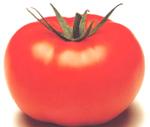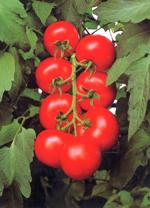| Fruits |
Vegetables
|
|
Note: Composition for 100 g. of fresh product Values in ( min. - max. ) format. | |
| Energy: 17.00-23.00 kcal Fats: 0.21-0.30 g Fibres: 0.95-1.00 g Fat Acids Saturated: 0.10-0.10 gMonounsat.: 0.10-0.10 g Polyunsat.: 0.20-0.20 g Minerals Calcium: 7.00-11.00 mgZinc: 0.100-0.168 mg Chlorine: 30.00-55.00 mg Phosporus: 17.00-24.00 mg Iron: 0.500-0.700 mg Magnesium: 7.00-13.53 mg Manganese: 0.0720-0.131 mg Potasium: 242.00-253.00 mg Selenium: 0.985-0.985 µg Sodium: 3.37-13.00 mg Iodine: 0.53-2.80 µg | Proteins: 0.70-0.95 kcal Carbohidrates: 2.60-4.30 g Liposoluble Vitamins A Retinol: 0.00-84.33 µgA Carotenoids: 506.00-640.00 µg E or Tocoferol: 0.930-1.22 mg K or Filoquinone: 8.00-8.00 µg Liposoluble Vitamins B1 or Thiamine: 0.046-0.090 mgB2 or Riboflavine: 0.010-0.035 mg B3 or Niacine: 0.60-1.00 mg B5 or Pantothenic Acid: 0.250-0.310 mg B6 or Piridoxine: 0.100-0.140 mg B9 or Folic Acid: 17.00-24.54 mg C or Ascorbic Acid: 17.00-24.54 mg |
|
Note: Composition for 100 g. of fresh product Values in ( min. - max. ) format. | |
| Energy: 16.00-20.00 kcal Fats: 0.10-0.30 g Fibres: 0.41-0.70 g Minerals Calcium: 10.00-27.00 mgZinc: 0.10-0.23 mg Chlorine: 93.00-93.00 mg Phosporus: 11.17-25.00 mg Iron: 0.400-0-600 mg Magnesium: 11.00-12.85 mg Manganese: 0.10-0.10 mg Potasium: 193.00-250.00 mg Selenium: 0.95-0.95 µg Sodium: 9.00-39.00 mg Iodine: 3.00-3.00 µg | Proteins: 1.00-1.15 kcal Carbohidrates: 2.74-3.20 g Liposoluble Vitamins A Retinol: 0.00-101.67 µgA Carotenoids: 220.00-610.00 µg E or Tocoferol: 1.22-1.22 mg Liposoluble Vitamins B1 or Thiamine: 0.042-0.060 mgB2 or Riboflavine: 0.020-0.032 mg B3 or Niacine: 0.70-0.90 mg B5 or Pantothenic Acid: 0.20-0.20 mg B6 or Piridoxine: 0.11-0.11 mg B9 or Folic Acid: 12.00-16.50 mg C or Ascorbic Acid: 12.00-16.50 mg |

 The tomato is the vegetable product of greater economic importance. More than 90 million tons are produced every year everywhere in the world. The main producing countries are China, the United States, Turkey and Egypt. Besides, it is one of the vegetables with more diversity of uses. Apart from the raw consumption, it is also cooked, stewed, fried, in pickling, as sauce or combining with other foodstuffs. It is also processed in the industry dispatched whole, as paste, juice, powder, etc. At present, 25 and 30% of the annual world production is intended for the processing industry.
The tomato is the vegetable product of greater economic importance. More than 90 million tons are produced every year everywhere in the world. The main producing countries are China, the United States, Turkey and Egypt. Besides, it is one of the vegetables with more diversity of uses. Apart from the raw consumption, it is also cooked, stewed, fried, in pickling, as sauce or combining with other foodstuffs. It is also processed in the industry dispatched whole, as paste, juice, powder, etc. At present, 25 and 30% of the annual world production is intended for the processing industry. In spite of originating from South America, its culture has spread all over the world, although the greatest yield is produced in warm climates with good illuminance. The summer must be long, with temperatures between 23 and 24ºC during the day and 14ºC at night. Tomatoes prefer slightly acid soils.
The fruit is a berry, thick and fleshy with two or more segments, of different shape and colours according to the variety. Its weight ranges from few milligrams to 600 grams. It is usually red, although there are also yellow tomatoes. The diameter of the fruit ranges from 3 to 16cm. The varieties of very small size are called cherry tomatoes.
There are multiple varieties of tomato, and their number grows continuously, obtaining plants with more resistance to diseases, higher yields and fruit of better quality and conservation.
In countries such as Spain, they are cultivated all the year round, thanks to the climate and the use of greenhouses, which allows to obtain tomatoes of extra early cycle (from mid February), of early cycle (from mid May), of normal cycle (throughout the summer) and of late cycle (from September to February).
Nowadays, tomatoes play a fundamental role in the daily diet, both for their availability and versatility as for their high nutritious value, mainly in mineral salts and vitamins.

The tomato belongs to the Solanaceae family and it is original from South America. It may live for several years, although the tomato is only kept for one year in the field.
The leaves disposition in the stem is alternate. The leaves are compound, that is to say, they are formed by 7 or 11 single leaves. The tomato plant shows a hairy surface that segregates a substance of acrid smell. The root is large, reaching up to 60cm of depth.
Good seasonings for the tomato
Season with fresh basil, instead of marjoram; add aclove of garlic, black minced olives, and olive oil for an exquisite and fresh dish
Less acid tomato sauce
Add a teaspoon of sugar before cooking time is finished so that the tomato sauce loses acidity
Maturing the tomatos
When bought too green, they are left to mature near a sunny window. They can also wrapped in newspaper and kept out of the fridge until they are ready
Peeling the tomatoes
Although the skin of the tomato is rich in vitamins and minerals, it is not always welcomed by delicate stomachs or organisms that tend to form kidney stone. In order to easily peel the tomatos, wash under hot water. There is another trick to this: rub the surface of the tomato with the nonsharp side of a knife. A small shallow cut will be enough and the skin will be out
| Interempresas Media, S.L. / 2026 | [ Legal notice | Política de Protección de Datos | Política de cookies | Publicidad] |
